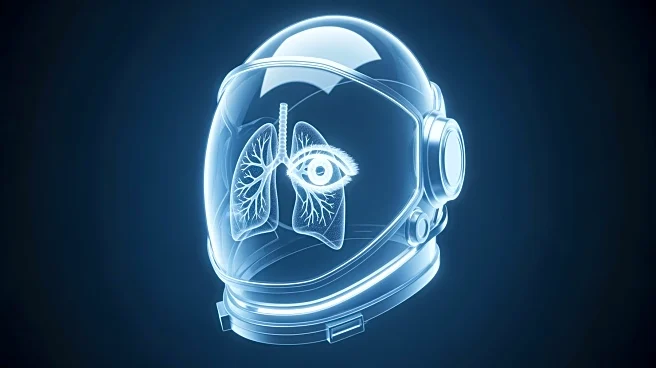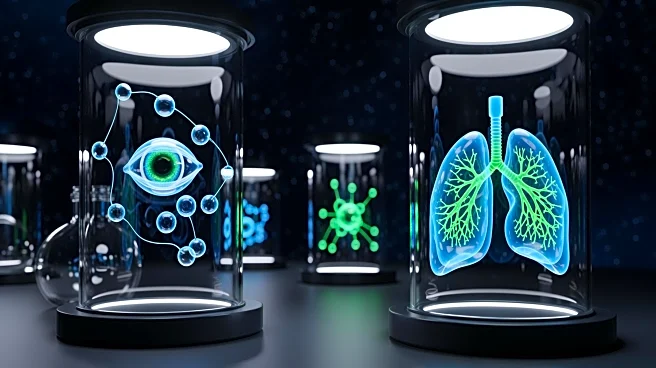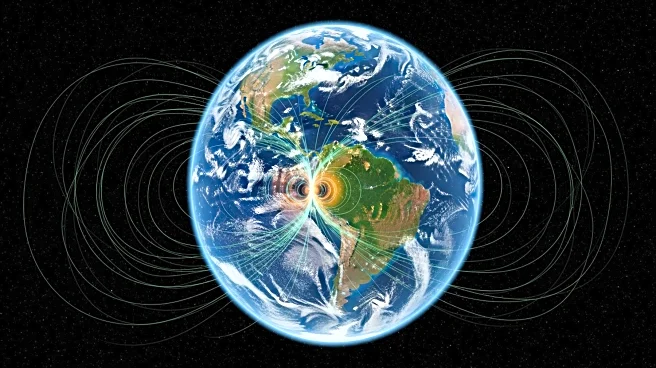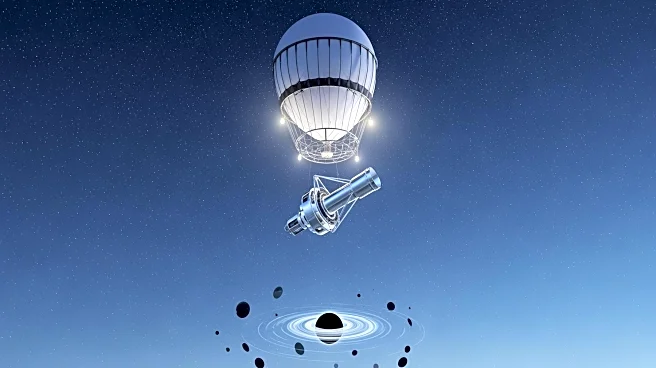What's Happening?
The Expedition 73 crew aboard the International Space Station engaged in a series of scientific studies focusing on heart health, stem cells, fluid physics, and spacecraft fire safety. NASA Flight Engineer
Jonny Kim wore a sensor-packed vest and headband to measure cardiovascular data during exercise, contributing to research on space-induced health conditions. Kim also processed stem cell samples to study microgravity's effects on their conversion to cardiac or brain cells, potentially leading to advanced therapies for astronauts and Earth-based conditions. Flight Engineers Mike Fincke and Kimiya Yui conducted physics experiments, including observing particle-laden droplets and flame spread in space, which may inform commercial in-space manufacturing and improve spacecraft fire safety. Additionally, NASA Flight Engineer Zena Cardman completed spacesuit work and checked the operations of a new ultrasound device for crew health monitoring. Roscosmos cosmonauts conducted assessments to understand their adaptation to spaceflight stresses, while Flight Engineer Oleg Platonov completed Earth photography and serviced station systems.
Why It's Important?
The research conducted by the Expedition 73 crew is crucial for advancing our understanding of human health in space and improving safety measures for future missions. The cardiovascular and stem cell studies aim to address health challenges faced by astronauts, potentially leading to personalized treatments and therapies applicable both in space and on Earth. The physics experiments contribute to the development of safer and more efficient manufacturing processes in microgravity, which could have significant implications for commercial space ventures. The successful operation of new medical devices and spacesuit systems ensures the crew's well-being and operational readiness, highlighting the importance of continuous innovation in space technology. These efforts not only enhance the safety and effectiveness of current missions but also pave the way for long-term human presence in space.
What's Next?
The ongoing research aboard the International Space Station will continue to provide valuable insights into the effects of microgravity on human health and materials science. As the crew completes their current studies, new experiments and technologies will be introduced to further explore these areas. The findings from these investigations will inform future mission planning, including the development of health monitoring systems and safety protocols for extended space travel. Collaboration between international space agencies will remain essential in advancing scientific knowledge and ensuring the success of future missions. The results of these studies may also lead to innovations in medical treatments and manufacturing techniques on Earth, demonstrating the broader impact of space research.
Beyond the Headlines
The research conducted on the International Space Station not only addresses immediate challenges faced by astronauts but also contributes to the broader scientific understanding of human biology and materials science. The unique environment of space provides opportunities to study phenomena that are difficult or impossible to replicate on Earth, offering insights that can lead to breakthroughs in various fields. The collaboration between NASA and international partners like JAXA and Roscosmos exemplifies the importance of global cooperation in advancing space exploration. As space missions become more ambitious, the knowledge gained from these studies will be instrumental in overcoming the challenges of long-duration space travel and establishing a sustainable human presence beyond Earth.











